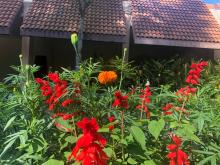
Abstract: "The Nilgiri district may almost be said to be one of those happy countries which have no history. Even had it been sufficiently rich or strategically important to tempt an invader, its inhospitable climate, the difficulties of the passes up to it and the feverish jungle which hedged it round would have deterred any but the boldest. But it never contained any towns worth sacking or forts worth capture; and the only inhabitants were poor graziers and cultivators” – Willam Francis in 1908 in the Madras District Gazetteer.
“The great powerful minister of Bittideva was Punisa who had defeated the Todavas, driven the Kongas underground, slaughtered Poluvas, put to death the Maleyalas, frightened the pride of the arms of King Kala, and entering the Nila mountains, he brought fame to the goddess of victory” – Hoysala inscription 1117 AD
Join us this Wednesday, as we discuss these seemingly contrasting perspectives through our current engagement with the Nilgiris Archeological Project. We'll begin with a brief introduction by project PI Dr Daniela De Simone at Ghent University, Belgium (video). We will follow this up with a discussion on the paleoecology and ethnoarchaeology aspects of the indigenous communities constituting the rich socio-economic heritage of the Nilgiris.
About the speakers: Dr P. Ramya Bala is currently working on ‘forest fire-vegetation-human inter-relationships in the tropical dry forests of southern India’, supported by the DST-INSPIRE Award.
Dr Udaya Kumar is currently working on TCS heritage project and involved in Nilgiris Archeological Project with Gent University. His work covers ethnoarchaeology and experimental archaeology of materials culture.
